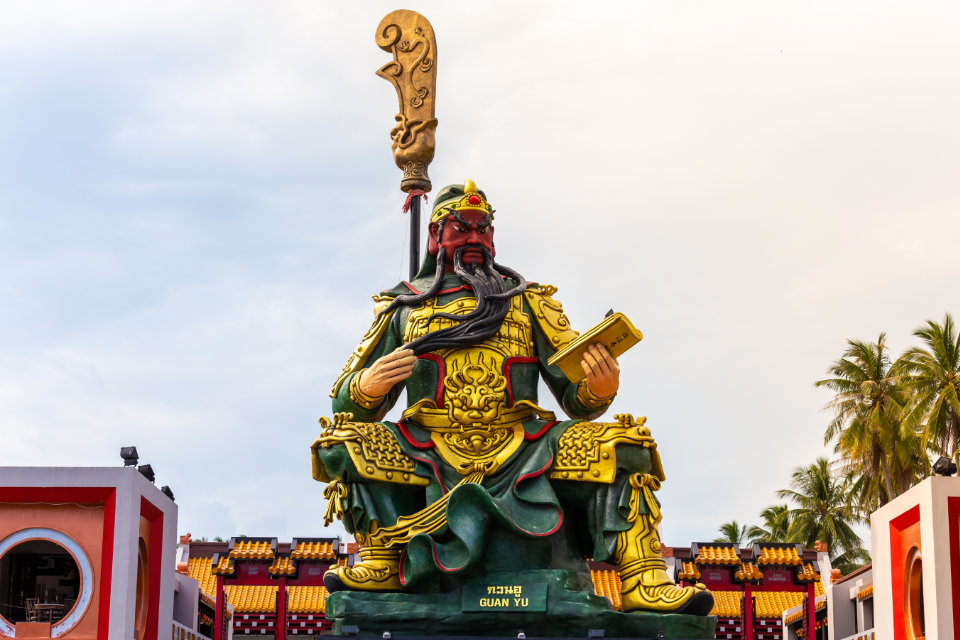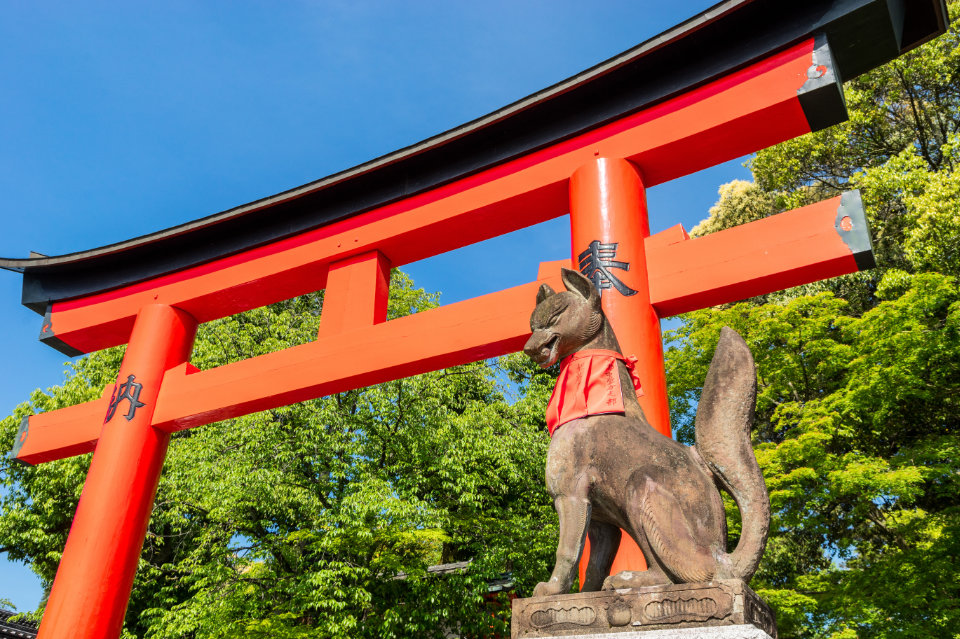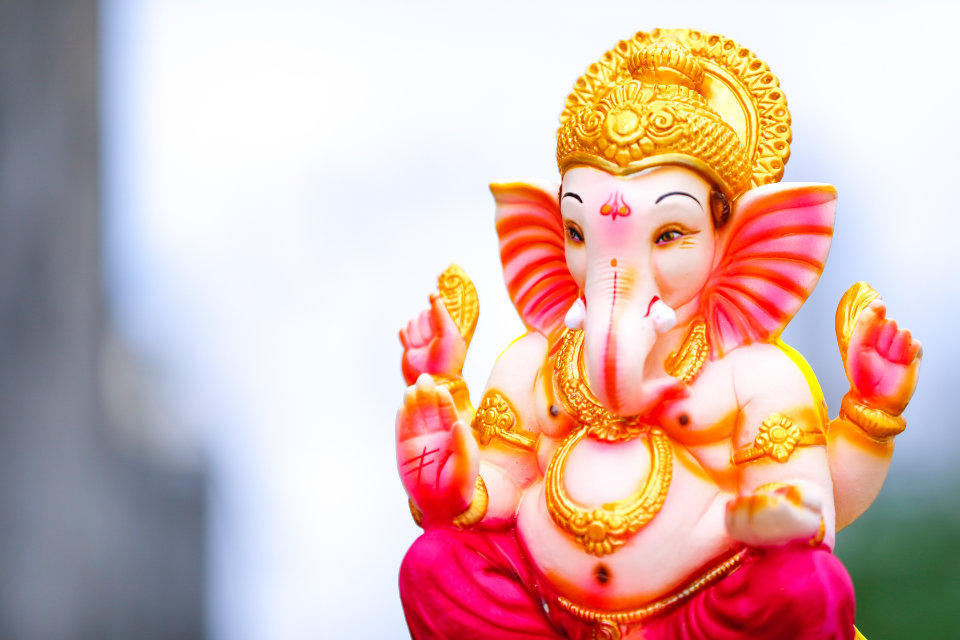Throughout history, societies have revered various deities responsible for bestowing wealth, prosperity, and good fortune upon their devotees. Among these figures, the God of Wealth holds a unique place in the hearts of many, bridging the ethereal with the materialistic aspirations of humans.
Across different cultures and geographies, the essence of the God of Wealth is universally acknowledged, but its depiction and stories behind it are incredibly diverse.
This exploration into the significance and narratives surrounding this deity promises a journey of enlightenment and understanding.
Table of Contents
1. Caishen 财神 (Chinese Culture)
Caishen, often termed as the God of Wealth in Chinese culture, is a central figure celebrated for bestowing prosperity upon the devoted. His influence permeates Chinese communities around the world.
Sporting lavish robes and holding symbols of riches, Caishen is one of the most popular deities during the Chinese New Year 2024 festivities. His image graces many homes and businesses, seeking financial blessings for the year ahead.
Many legends surround him; some depict him as a mortal who performed miracles, while others view him as a celestial being always associated with abundance.
How to Pray to Caishen: Offerings of incense, fruit, and even mock gold bars are presented during prayer. It’s also customary to chant verses seeking his favor.
During Chinese New Year, families invite Caishen, believing he descends from the heavens on New Year’s Eve to bless households. To secure his favor, they set up altars with his image and give offerings. Some also hold a “welcoming Caishen ritual” for him on the fifth day, seen as his day of return to the heavens.
Significant Dates to Note for Caishen: Chinese New Year – when many households invite his spirit for an auspicious year ahead.
2. Kubera कुबेर (Hindu Mythology)
Kubera, revered as the Lord of Wealth in Hindu tradition, holds dominion over the world’s riches. Often portrayed as a dwarf with a golden complexion and a big belly, Kubera isn’t just a beacon of wealth, but also safeguards against misfortunes.
His lore deeply ties to ancient Vedic texts where he’s often associated with the North and is hailed as the custodian of the world’s treasures.
How to Pray to Kubera: Devotees light lamps and chant mantras dedicated to him, especially during Diwali.
Significant Dates to Note for Kubera: Diwali – the festival of lights, where he’s revered alongside Goddess Lakshmi for blessings of prosperity.
3. Guan Gong 关公 (Chinese Culture)

Guan Gong, also known as Guan Yu or the Martial God of Wealth 武财神, stands as a towering figure in Chinese culture, symbolizing not only valor and warfare but also guarding wealth and prosperity. With a visage often depicted as red-faced and a long, flowing beard, he embodies integrity, loyalty, and righteousness.
Hailing from the historic Three Kingdoms period as a general, his deification through the ages has made him a beacon of martial prowess and business success.
Universally revered across Chinese communities, from the mainland to overseas areas like Singapore and Malaysia, his influence is profound. If you’re wondering how to pray to Guan Gong, understanding his legacy is the first step.
How to Pray to Guan Gong:
- Begin by lighting three incense sticks.
- Bow three times before his statue or image.
- Present offerings such as tea, fruits, or even roast pork — his favorite.
- If you’re praying for business success, you can also place your company’s ledger or a representation of your business on his altar while praying. It is also a common practice to read aloud business contracts before his statue, seeking his blessings for a fair and prosperous deal.
- Finally, while Guan Gong appreciates boldness, always approach with respect, and avoid making rash promises or hasty vows.
Significant Dates to Note for Guan Gong: His birthday is celebrated on the 24th day of the sixth lunar month. This day is particularly significant as devotees throng to temples to pay their respects and seek his blessings. Many businesses also choose this day to initiate new ventures or projects under his watchful gaze, ensuring prosperity and success. Additionally, special ceremonies and parades may be held in some regions, showcasing the rich tapestry of traditions associated with this revered deity.
4. Lakshmi लक्ष्मी (Hindu Mythology)
Lakshmi, the radiant beacon of Wealth and Prosperity in Hindu culture, is often depicted seated on a lotus, flanked by elephants. As the embodiment of opulence and the consort of Lord Vishnu, Lakshmi’s narratives are intricately woven into Hindu epics, ensuring her enduring prominence across generations.
How to Pray to Lakshmi: Devotees light lamps, offer sweets, and sing hymns in her praise, especially during Diwali, seeking blessings of opulence.
Significant Dates to Note for Lakshmi: Diwali – her most venerated festival when she is believed to visit homes that are lit up and clean.
5. Tua Pek Kong 大伯公 (Southeast Asia Chinese Culture)
大伯公 (Tua Pek Kong) is a revered Taoist deity predominantly in the pantheon of Peranakan folk religion, which is widely practiced by the ethnic Chinese communities in Malaysia, Singapore, and certain regions of Indonesia. Renowned as the “God of Prosperity” throughout Southeast Asia, Tua Pek Kong is often associated with immense wealth and blessings.
While some believe him to be an incarnation of the god “Fu” from the esteemed trio “Fu Lu Shou,” representing “Prosperity, Fortune, and Longevity,” others narrate his tale as that of a noble sailor from Fujian who selflessly sacrificed himself for the sake of others.
Regardless of his origins, his prominence in these regions as a beacon of prosperity and protection remains undiminished.
How to Pray to Da Er Ye Bo: When venerating Da Er Ye Bo, devotees typically offer incense sticks, fruits, and sometimes even joss paper (mock money). It’s also common to present food offerings such as roasted meats, rice, and other dishes, particularly during special occasions or festival days. Prayers usually involve traditional Chinese chants, asking for the deity’s protection, guidance, and blessings.
Significant Dates to Note for Da Er Ye Bo: While the specific dates of veneration can vary depending on the region and specific temple practices, one significant period is during the Ghost Month (7th lunar month), when many devotees will offer special prayers and offerings to Da Er Ye Bo to seek protection from wandering spirits. Moreover, during Chinese New Year, there’s also a custom for worshippers to visit temples dedicated to Da Er Ye Bo to obtain his blessings for the upcoming year.
6. Bes (Ancient Egypt)
Bes, a distinct Egyptian deity with dwarf-like features, was venerated not just for his association with joy but also as a protector of households against evil. His dancing imagery, juxtaposed with his lion-like face, represents his dual role of bringing joy and guarding homes from malevolent spirits.
How to Pray to Bes: Ancient Egyptians had his images at homes and also wore amulets symbolizing him.
Significant Dates to Note for Bes: While there isn’t a specific festival for Bes, his importance was daily, protecting the household from perils.
7. Njord (Norse Mythology)
In the annals of Norse mythology, Njord stands as a beacon of sea-borne wealth and prosperity. A Vanir deity, he was pivotal for fishermen and merchants, ensuring their voyages bore fruit. Legends often emphasize his contrasting nature with Skadi, the giantess of winter, highlighting the vastness of his influence.
How to Pray to Njord: Sacrifices, especially of marine origin, were offered at his temples, seeking protection and wealth on seafaring voyages.
Significant Dates to Note for Njord: There’s no specific date, but any sea expedition or trade voyage had his invocation.
8. Inari Ōkami 稲荷大神 (Japan)

Inari Ōkami, deeply revered in Shinto belief, embodies fertility, rice, and prosperity. Foxes, her messengers, are synonymous with her essence. With roots tracing back to rice cultivation, her worship has evolved, embodying multiple facets of wealth and abundance.
How to Pray to Inari Ōkami: Offerings of rice and sake are typical at her shrines, along with specific chants and rituals.
Significant Dates to Note for Inari Ōkami: While she’s revered all year round, the first harvest season sees special celebrations at Inari shrines.
9. Tezcatlipoca (Aztec Mythology)
Tezcatlipoca, powerful and enigmatic, wields control over night, hurricanes, and wealth in Aztec beliefs. With a smoking mirror as his emblem, this deity had the foresight to influence mankind’s fate. His tales often set him against Quetzalcoatl, resulting in cosmic battles that shaped the world.
How to Pray to Tezcatlipoca: Elaborate ceremonies involving dances, music, and sometimes sacrifices were conducted in his honor.
Significant Dates to Note for Tezcatlipoca: The month of Tepeilhuitl was dedicated to him, filled with festivities and rituals.
10. Ai Apaec (Mochica Culture, Peru)
As the chief deity of the Moche civilization, Ai Apaec was both feared and revered. His diverse representations, ranging from spiders to humans with feline traits, emphasize his vast domain. Central to Moche religious practices, his influence continues to resonate in archaeological findings.
How to Pray to Ai Apaec: It involved ritualistic ceremonies, often led by priests, to appease him and seek his blessings.
Significant Dates to Note for Ai Apaec: While specific dates remain elusive, archaeological findings indicate periodical rituals and feasts dedicated to him.
11. Mammon (Christian Tradition)
More symbolic than divine, Mammon in Christian teachings represents the allure and perils of wealth and greed. Scriptures, especially the New Testament, caution against the temptations he embodies, emphasizing the eternal conflict between materialistic and spiritual pursuits.
How to Pray to Mammon: In Christian tradition, one doesn’t pray to Mammon but rather seeks protection from the temptations he represents.
Significant Dates to Note for Mammon: There isn’t a celebration for Mammon. Instead, teachings across Lent and other Christian observances warn against the lure of Mammon.
12. Seven Stars of the Big Dipper (Chilseong) – 칠성 (Korean Culture)
In Korean culture, the Seven Stars of the Big Dipper, known as Chilseong, hold significant spiritual importance. Historically, these stars were worshipped for their power to influence various aspects of life, ranging from personal fortunes to national events.
The belief in Chilseong is deeply rooted in Korean Shamanism, where these stars are considered deities providing blessings and protection. While they are not explicitly Gods of Wealth like Caishen, they are revered for their ability to bestow good fortune, health, and success upon devotees.
How to Pray to Chilseong: Prayers to Chilseong usually take place during specific shamanistic rituals, especially when seeking general blessings and protection. Offerings of rice, fruit, and incense are made, accompanied by traditional Korean chants to invite the deities’ benevolence. Some practitioners also utilize ritualistic dances and songs to pay homage.
Significant Dates to Note for Chilseong: There isn’t a fixed date specifically for Chilseong, but many believers and practitioners conduct rituals on significant days in the lunar calendar or during personal milestones. Some might also consult a local shaman for the most auspicious dates to conduct rituals or prayers.
13. Mazu 媽祖 (Chinese Culture)
Mazu, often referred to as “Heavenly Holy Mother” or “Empress of Heaven”, is a Taoist goddess originally revered by fishermen and sailors in the Fujian province of China. Over time, her worship spread across various parts of East and Southeast Asia, including Taiwan, Vietnam, Japan, and the Philippines. While initially venerated for her protective qualities over those at sea, she gradually came to symbolize good fortune and prosperity. Temples dedicated to Mazu can often be found in coastal areas, signifying her enduring relationship with the sea.
How to Pray to Mazu: Devotees often bring offerings of incense, fresh fruits, and food to Mazu temples. Lighting candles and reciting specific prayers or chants seeking her blessings for safety, health, and prosperity is also common. During special festivals, parades and operas are held in her honor.
Significant Dates to Note for Mazu: The most significant festival related to Mazu is her birthday, celebrated on the 23rd day of the third lunar month. On this day, grand processions, rituals, and cultural performances are organized at Mazu temples, drawing huge crowds of devotees and tourists.
14. Phra Phrom พระพรหม (Thai Culture)
Phra Phrom is commonly worshiped in Thailand, especially in the bustling city of Bangkok. The four-faced buddha is believed to bestow blessings of fortune, protection, and success upon his devotees. While Phra Phrom has his roots in Hinduism, his significance in Thai culture has been uniquely adapted to local beliefs and practices.
Erawan Shrine in Bangkok, dedicated to Phra Phrom, is one of the most visited sacred sites in the country. Locals and tourists alike come to this shrine to seek the god’s blessings and to thank him by sponsoring traditional dance performances.
How to Pray to Phra Phrom: Devotees approach the four-faced buddha Erawan shrine with offerings such as incense sticks, lotus flowers, and candles. It’s also common for believers to hire traditional Thai dance troupes to perform at the shrine as a way to give thanks for prayers answered or to seek blessings. Another popular offering is fragrant jasmine garlands.
Significant Dates to Note for Phra Phrom: While there isn’t a specific date dedicated solely to Phra Phrom, the Erawan Shrine sees heightened activity during major Thai festivals and special occasions, as many come to seek blessings for the events in their lives.
15. Lord Ganesha गणेश (Hindu Culture)

Ganesha, often depicted with the head of an elephant and a jovial demeanor, is a beloved figure in Hinduism and various other cultures. As the God of Wealth, Ganesha embodies the concept of material and spiritual abundance. Originating from Hindu mythology, Ganesha is the son of Lord Shiva and Goddess Parvati. His distinctive appearance is rooted in a divine narrative where his elephant head was bestowed upon him by his father after a series of cosmic events.
Ganesha’s significance as the God of Wealth goes beyond the acquisition of material riches; it encompasses the blessings of prosperity, knowledge, and the ability to overcome obstacles. His elephant head symbolizes sagacity and a deep connection with ancient wisdom. Devotees seek his guidance and blessings before embarking on new ventures, ensuring a smooth path and favorable outcomes.
How to Pray to Ganesha Devotees invoke Ganesha’s blessings through a spectrum of rituals and offerings. Ganesh mantras, such as “Om Gam Ganapataye Namaha,” resonate with his energy, fostering a spiritual connection. His idols are adorned with vibrant flowers and offered favorite sweets like modak. Lighting incense and a diya (lamp) is symbolic of dispelling darkness and inviting auspiciousness.
Significant Dates to Note for Ganesha Ganesha Chaturthi, celebrated on the fourth day of the Bhadrapada month in the Hindu calendar, marks his birth and is a prime occasion for seeking his blessings. Ganesh Jayanti, observed as his birth anniversary, is another significant celebration among his devotees.
Reflecting on the Universal Quest for Wealth
The enduring reverence for the God of Wealth in so many cultures underlines humanity’s deep-seated desire for prosperity and the betterment of their lives.
Whether seeking the blessings of Caishen, Plutus, or Tua Pek Kong, the core sentiment remains the same – a hope for abundance and fortune.
As we reflect on these varied yet interconnected traditions, one might ponder: Is our collective reverence for the God of Wealth a mere reflection of material aspirations, or does it symbolize a broader quest for life’s abundance in every form?
Who is the God of Wealth in Chinese culture?
Caishen or 财神 is considered the God of Wealth in Chinese culture, revered by many during Chinese New Year to bring prosperity.
Is there a God of Wealth in Indian tradition?
Yes, Kubera and Goddess Lakshmi are often considered deities of wealth in Indian mythology.
Does Korea have a Wealth Deity or God of Wealth?
In Korean culture, the Seven Stars of the Big Dipper (Chilseong) are venerated and among them, certain stars are associated with prosperity.
What is Tua Pek Kong?
Tua Pek Kong, known as 大伯公, is a deity of prosperity and is particularly worshipped by ethnic Chinese in Malaysia, Singapore, and parts of Indonesia.
Are there wealth gods in Western cultures?
While not labeled strictly as “wealth gods”, certain deities like Plutus in ancient Greek religion were associated with abundance and riches.
How do people pray to the God of Wealth?
Practices vary; in Chinese traditions, offerings to Caishen might include incense, fruit, and mock gold bars, especially during Chinese New Year.
Why are God of Wealth significant across cultures?
Wealth deities reflect a universal desire for prosperity, stability, and abundance in human societies.



